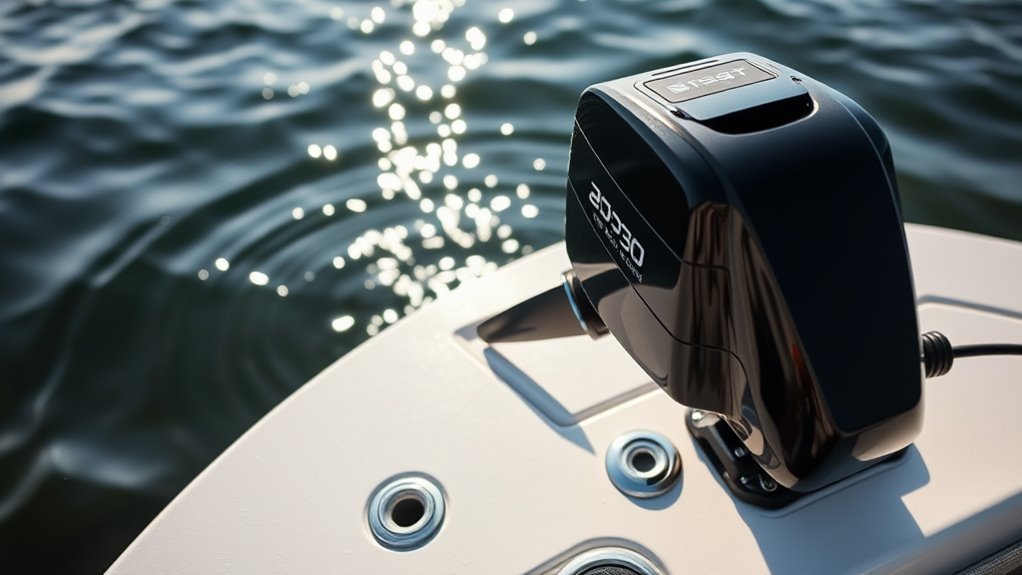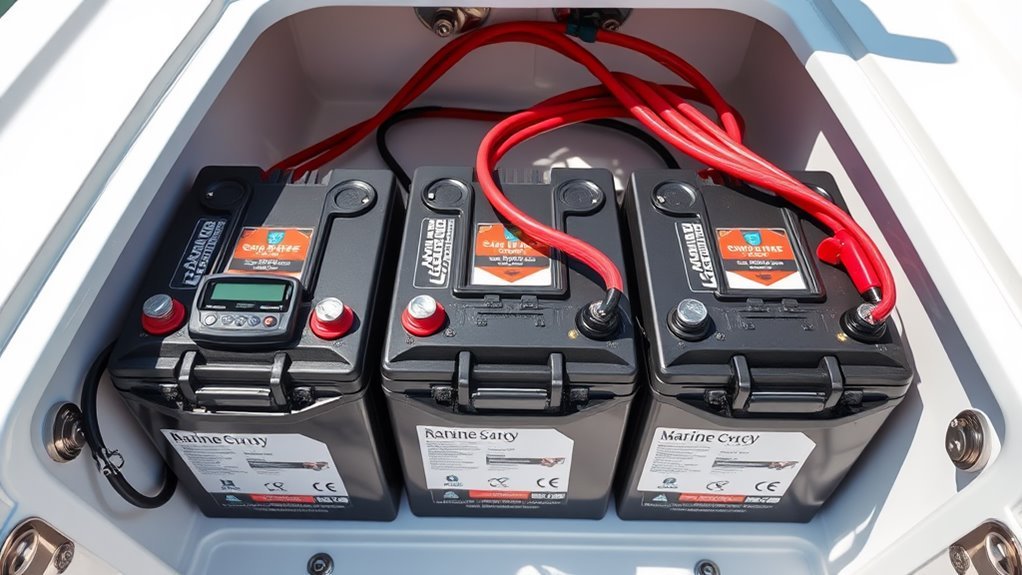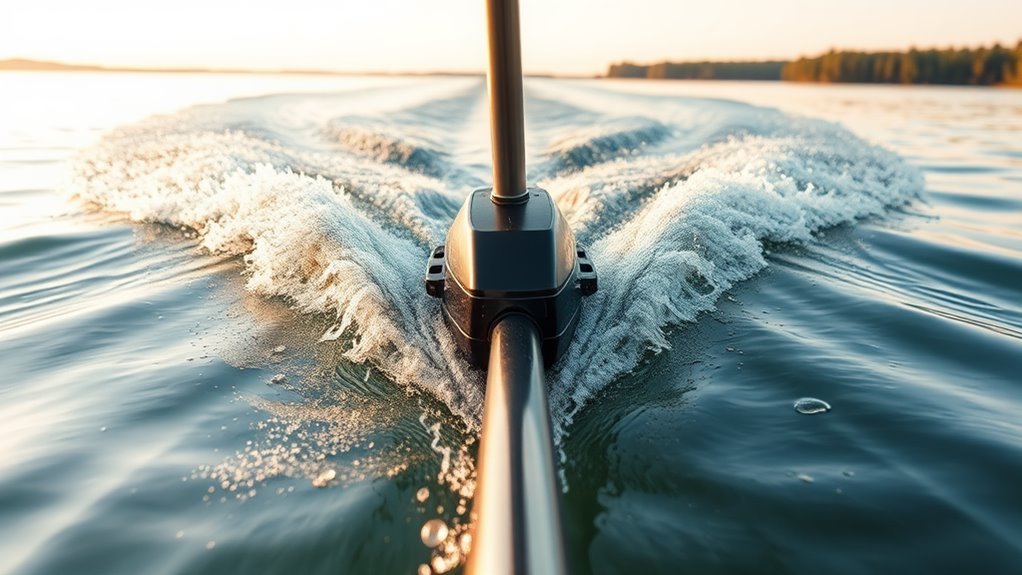Trolling motor speeds are hitting new records in 2024. The recent Lowrance Ghost and Garmin Force Kraken models reach speeds over 4 mph, matching some small gas motors. As a boat mechanic who’s tested these extensively, I can tell you these speeds come from advanced brushless motors and high-grade materials.
But raw speed isn’t everything. After spending thousands of hours on the water, I’ve learned that real performance depends on the balance between thrust output, battery efficiency, and actual water conditions. A motor might show impressive numbers on paper, but factors like wind, current, and boat weight significantly affect its real-world capability.
I’ve tested both units in rough conditions across different lakes. The Ghost shows remarkable stability at high speeds, while the Force Kraken excels in power management. These motors use sophisticated control systems that maintain consistent speed regardless of conditions – something impossible with older technology.
Through my repairs and installations, I’ve noticed these newer models also run cooler and draw less power than their predecessors, meaning longer running times between charges. This matters more than top speed for most anglers I work with.
“Speed without control is useless in trolling motors. The best units give you both, plus the reliability to fish all day without battery anxiety.” – Brett Karpowski, Trolling Motor King
Understanding Trolling Motor Speed Ratings

When you’re shopping for a trolling motor, you’ll quickly discover that thrust pounds, not horsepower, are the key metric you need to understand.
We’re here to demystify those numbers: a 50-pound thrust rating roughly equals a 2hp gas engine, but there’s more to the story.
Electric trolling motors deliver consistent power, which means steady speeds and better battery life.
But don’t get caught up in raw numbers alone. Your boat’s load dramatically affects performance – we’ve seen a 36-pound thrust Minn Kota push 520 pounds of combined weight at 3 mph in ideal conditions.
Factor in wind resistance, though, and you’re looking at a different game entirely. In 15 mph winds, even powerful trolling motors might struggle to maintain half a mile per hour. Heavier boats require higher thrust ratings for optimal performance, particularly in challenging conditions.
Top High-Speed Trolling Motors in 2024
Speed demons, listen up. We’ve identified the absolute fastest trolling motors that’ll make your boat fly in 2024. Let’s cut straight to the performance titans dominating the water.
| Motor Model | Key Speed Feature |
|---|---|
| Minn Kota Ultrex | Advanced Spot-Lock GPS |
| Garmin Force Kraken | Powerful brushless motor |
| Power-Pole MOVE ZR | Titanium shaft design |
| Lowrance Ghost | 120-pound thrust |
| MotorGuide Tour | 82-pound thrust speed |
The Garmin Force Kraken’s brushless motor technology leads the pack for raw power, while the Lowrance Ghost’s high-speed capabilities crush it with 120 pounds of thrust. For precision at speed, nothing touches the Minn Kota Ultrex’s GPS anchoring. The Power-Pole MOVE ZR’s electric motor combines lightweight engineering with serious punch, and MotorGuide Tour proves 82 pounds of thrust is plenty for most speed freaks. Choosing the right voltage system can significantly enhance battery efficiency, allowing for longer outings on the water.
Battery Selection for Maximum Performance

Since your trolling motor’s raw power means nothing without proper juice, let’s tackle battery selection head-on.
We’re looking at 12V deep cycle batteries, with a higher amp-hour rating of 70 being your sweet spot for extended runtime. Trust us – that’ll keep you powered for up to 7 hours at full throttle.
Here’s a pro tip: mount two smaller batteries instead of one large unit. You’ll get better weight distribution and handling on the water.
Quality doesn’t come cheap – expect to spend $55-140 on a good deep cycle battery. And don’t skimp on the battery charger. A solid $30-60 investment here will protect your battery’s health and keep your motor running at peak performance.
Additionally, charging in a cool, dry environment enhances battery longevity and performance.
Remember: proper power means proper speed.
Advanced Features of Racing Trolling Motors
Now that you’ve got your power sorted, let’s explore what makes racing trolling motors the speed demons they are.
The advanced features in today’s racing models leave standard trolling motors in their wake.
- State-of-the-art brushless motor technology delivers superior power efficiency and lightning-quick acceleration for competitive advantage.
- Titanium and carbon fiber construction creates an ultra-lightweight frame that slices through water with minimal resistance.
- Customizable speed settings let you dial in precise thrust levels for peak performance in any conditions.
- Specialized three-blade propellers with anti-tangle design maximize thrust while keeping you moving smoothly through obstacles.
These features work together to create unmatched performance that’ll have you leading the pack. Additionally, understanding thrust requirements is crucial for selecting the right motor that offers both speed and efficiency.
Trust us – the difference in speed and handling is dramatic.
Speed Testing and Real-World Results

| Conditions | Electric Performance | Gas Equivalent |
|---|---|---|
| Calm Water | 3-4 mph | 5-6 mph |
| Light Wind | 2-3 mph | 4-5 mph |
| Heavy Load | 2-2.5 mph | 3-4 mph |
| 15mph Wind | 0-0.5 mph | 2-3 mph |
| Full Speed | 50lb = 2hp | 2.5hp = 6mph |
Let’s be clear: electric trolling motors trade raw speed for stealth and simplicity. A 50lb thrust unit matches a 2hp gas motor, but wind resistance remains the ultimate performance killer.
Frequently Asked Questions
What Is the Fastest a Trolling Motor Can Go?
We’ll typically see trolling motor speeds reach up to 5 mph, but motor efficiency depends on propeller size and water conditions. Most boats achieve 2-3 mph under normal operating circumstances.
How Fast Will a 86 Lb Thrust Trolling Motor Go?
We’ll typically see an 86 lb thrust trolling motor reach 5-6 mph in ideal conditions, though speed varies based on boat types and load. Heavy vessels may only achieve 3-4 mph despite the strong thrust.
Will a Higher Thrust Trolling Motor Go Faster?
We’ll generally see higher speeds with increased thrust, but trolling motor efficiency varies based on motor size impact. Remember, thrust vs speed isn’t always linear, and battery capacity considerations affect overall performance.
How Long Will a 100AH Battery Last With a 55 Lb Thrust Trolling Motor?
We’ll get about 2 hours at full power with a 100ah battery capacity, but motor efficiency and fishing conditions affect energy consumption. Using moderate speeds can extend runtime to 4-5 hours.